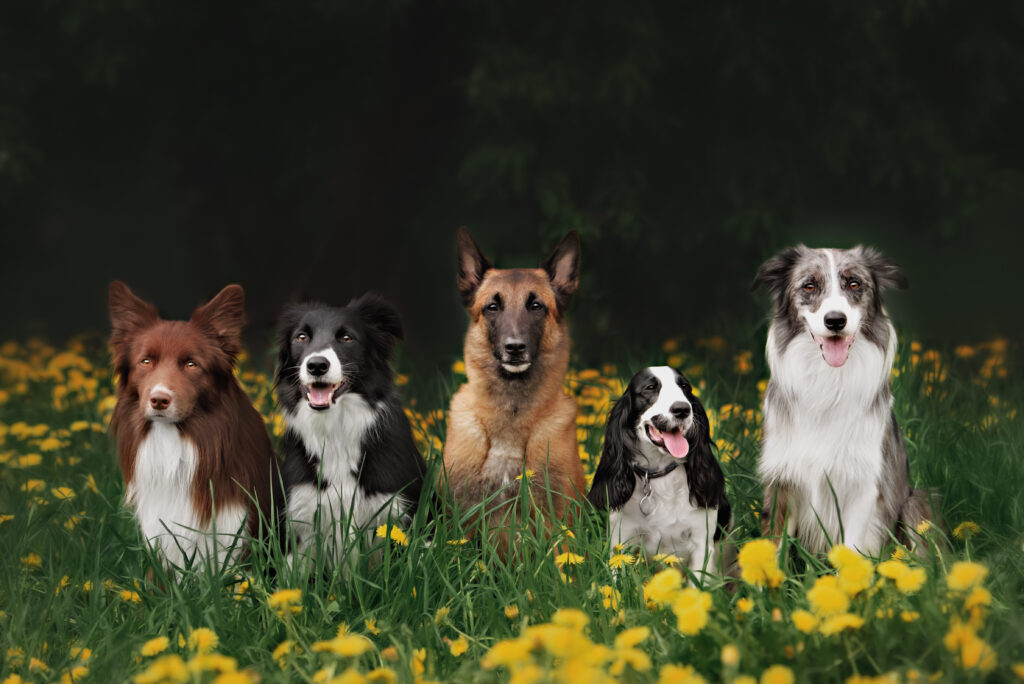I recently listened to a podcast where one of the main topics was whether the behaviors that we train will always have some kind of movement variability in them? Or can we expect our learners to carry out the behavior with the same movement pattern every single time, with variation taken to a minimum?
When we train new behaviors to our dogs, and especially if we are training them for sports performance and would like very high precision in the behaviors, then it may be attractive to try to get the repetitions to be as similar as possible. To have as little variability in them as we can possibly train.
But when we look at this from the movement point of view, is it really the best way to teach new behaviors or polish the old ones? And here’s something to think about: skillful movement actually assumes that there is variability in the movement. So being skillful at a certain movement does not mean that the movement will be exactly the same every time the learner does the movement. Skillful movement means that every repetition will be slightly different.
Random movement vs controlled variability
Here I don’t mean that when our learners are doing the behaviors then they will just throw their bodies around randomly and that’s efficient movement or an example of good movement. But when our learner is meeting the criteria set for the exercise, and between these criteria there is a slight variation in the way the learner carries out the exercise, then that’s actually something to strive for.
It comes out that carrying out movement skillfully or moving well means that the body is able to adjust itself on the fly. It doesn’t mean that every single repetition of the same movement will be exactly like the last one. But rather it means that when the start of the movement is slightly different than during the previous repetition, then the body can adjust the following movement in order to meet the final criteria of the exercise. So that it still achieves the same goal, but in a slightly different path.

One of the main reasons for that is to protect the body. Doing the same movement in exactly the same way over and over again can start overloading certain areas of the body, eventually leading to overuse injuries. Varying the movement helps to reduce the stresses and loads in different areas of the body so that no area of the body gets overloaded during the movement. And that applies also to our learners when we’re teaching them new behaviors or polish learnt behaviors.
When we expect our learners to carry out the movement in exactly the same manner in every single repetition, then we are actually asking them to be inefficient in their movement. Because naturally a good movement is supposed to be slightly variable.
What does it mean in practice?
Let’s take a look at the tucked sit example familiar to us from the previous blog post. In a tucked sit our learners are supposed to keep their front paws still while pushing off the ground with their rear legs, landing them behind the front legs and lowering their pelvis into a sit. Varying the movement does not mean that the dog starts shuffling the front paws or maybe become clumsy bringing the rear legs behind the front legs. It also doesn’t mean lowering the pelvis in an uncontrolled manner into a sit like you see in the video here.
What variability in the movement may mean, is that maybe our learner will push off a little bit stronger with the rear legs during one of the repetitions. And then has to adjust the movement slightly in order to land the rear legs behind the front legs (as was set by the exercise criteria) and lower the pelvis into a sit. Here the variability in the movement is in pushing off the ground with a bit more force than during the previous repetition. It also means that the body then adjusts the following movements by using the shoulders and back muscles in order to still meet the exercise criteria.
In this specific example, maybe we shouldn’t expect our dogs to push off the ground with the same force every single time? Is it really necessary to meet the final criteria of the exercise? Maybe we could allow our learners to adjust their own movement between the essential criteria in order to complete the exercise?
Varying movement is a skill
Instead of thinking how can we get as little variability in the moment as possible, maybe we should rather focus on teaching our dogs how to vary the moment while meeting the exercise criteria that we shouldn’t change? Variation is actually an essential life skill – it helps to keep the body from overuse injuries, and it’s also a skill that our dogs need when moving in the forest for example, or playing sports that require a lot of movement. It also happens that skillful movement variation is something we are not born with. It’s really a skill that needs to be trained.

No training or competition conditions will be perfect. There will always be some variation in the training surface, in our body language and different environmental conditions that actually do require our learners to be able to adjust their movement. Adjust it in order to meet the exercise criteria that are actually important, the criteria that we shouldn’t change. Maybe varying the movement is actually something that we should aim for? So that our dogs can actually learn good movement and improve their motor skills that carry over to real life situations.
It comes out that good movement skill is not actually about being able to do a movement in exactly the same way every single time, but it’s rather about knowing how to adjust the body and the movement based on the changing conditions – whether it is the environment or the start of the movement that was slightly different in the repetition.
The ability to know how to change the movement on the fly is actually more important than carrying out the movement in exactly the same way every single time. Knowing how to vary the movement is actually an essential life skill that helps to keep the body safe and away from the overuse injuries. When we train new behaviors, we should carefully think what criteria are crucial for the exercise and where can we allow our learners to actually vary their movement pattern.
That’s it for today’s post. Leave me a comment below and let me know your thoughts on this topic 🙂
See you soon!
Happy training!
Mari & Co.
This post was inspired by Todd Hargrove’s article on smooth movement, you can find it by clicking here.
